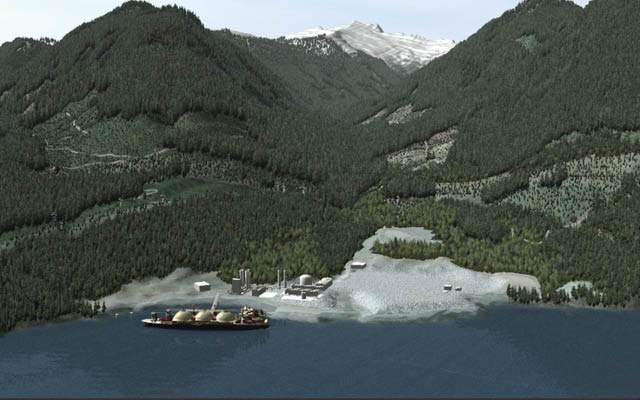PAYDAY AT WOODFIBRE (Part 6) — Humanitarian concerns override racial discrimination in BC; Woodfibre closes
After the war
British Columbia’s Japanese Canadian community never recovered from its wartime internment. Vancouver is a popular destination for Japanese tourists and students, but the Japanese “presence” in Vancouver is more that of a museum than a living, breathing culture.
There is no “Japan Town,” but in the area of Powell Street, immediately north of Chinatown, a few remnants of this once-vital community remain. The Vancouver Buddhist Church, formerly the Japanese Methodist Church, still exists at 220 Jackson Avenue, as does the Vancouver Japanese Language School and Japanese Hall at 475 and 487 Alexander Street, which was established in 1906.
Until the boom in Japanese restaurants in the 1980s, two restaurants on Powell Street were among the only Japanese dining establishments in the city. Japanese culture is primarily represented by an annual Japanese festival, by the famous Nitobe Memorial Garden at the University of British Columbia, and the Nikkei National Museum & Cultural Centre in Burnaby.

Many individual Japanese Canadians, however, did not allow their wartime experiences to cloud their futures. Among them are Dr. David Suzuki, biologist, environmentalist, host of Canadian Broadcast Corporation’s program, The Nature of Things, and Joy Kogawa, novelist and poet.1 Along with 29 other Japanese Canadians, both Suzuki and Kogawa are members of the Order of Canada.2

British Columbia’s Chinese population has fared better. Chinatown is a colourful destination popular with both tourists and Vancouver’s white residents, and draws many tourists to its Dr. Sun Yat-Sen Classical Chinese Garden. Broad swaths of Vancouver neighbourhoods and suburbs are essentially Chinese, but Chinese residents live in areas throughout the city. Chinese-owned businesses are common, as are Chinese clerks and employees in every phase of commercial, political, and professional life.
In the 2014 Vancouver civic election, Meena Wong, an immigrant from the People’s Republic of China who grew up during the Cultural Revolution, was a popular candidate for mayor. She received 9.4 per cent of the votes and came in third, beating out six other mayoral candidates. Among the other candidates and incumbents for city council, the Vancouver School Board, and the Parks & Recreation Commission were several men and women representing a wide range of ethnic and national backgrounds, but not one was Japanese.
The Woodfibre century ends
After almost a century of operations, which weren’t continuous because of the ups and downs of the international market for paper fibre, Western Forest Products made the decision to close the Woodfibre pulp and paper mill permanently. Poor market conditions and obsolescence of the mill’s infrastructure were obvious reasons, but so too was the environmental impact of the mill.
An unknown poet produced this poem at some point before the decision to close the mill was made, but long after environmental concerns began to be headline news (few doubted that the effluents from the mill had markedly degraded both the air and water quality of Howe Sound):
Woodfibre, Woodfibre, my little town
You're turning the waters in Howe Sound all brown
Woodfibre, Woodfibre, you let me down
You'd better clean up or else you'll be shut down.

During the 1960s, most employees began moving off the site to nearby Squamish or Britannia Beach, and began commuting to work by ferry. By 1973, the houses had been demolished. There are no obvious reminders that Woodfibre once thrived there, that a substantial number of its Japanese citizens had been sorely abused by the Canadian government in the name of security during and after the Second World War, and that scores of Chinese men had lived and worked there without female company or children, in a community that they could scarcely call home.
A "rebirth" of Woodfibre?
In 2015, a Singapore company, Woodfibre Liquid National Gas Ltd. purchased the Woodfibre property. The plan is to develop the Woodfibre site as a port for loading liquid natural gas on bulk carriers for export to China.

Both the Canadian federal government and the government of British Columbia have given a green light to the project, but native communities, protesting the project on environmental grounds, have forced the Woodfibre LNG to begin a lengthy and detailed environmental review. As a condition of purchase, Woodfibre’s former owner, Western Forest Products, is responsible for cleaning up the site and obtaining a Certificate of Compliance from the Ministry of Environment.
The Woodfibre LNG had been expected to ship 1.1 million tonnes of liquid national gas to other Asian clients annually, but the company has encountered a number of roadblocks in addition to environmental and aboriginal rights considerations. A worldwide glut of natural gas has resulted sharp price reductions, and the industry is being challenged by wind and solar energy technologies, all of which are now combined with the novel coronavirus pandemic, which delayed the contruction of the Woodfibre LNG plant until late in 2021.
-
Kogawa’s novel, Obasan, chronicles Canada's internment and persecution of its citizens of Japanese from the perspective of a young child. ↩︎
-
The Order of Canada The Order of Canada (in French, Ordre du Canada) is a Canadian national order, admission into which is the second highest honour for merit in the system of orders, decorations, and medals of Canada. It comes second only to membership in the Order of Merit, which is within the personal gift of Canada's monarch.
To coincide with the centennial of Canadian Confederation, the three-tiered order was established in 1967 as a fellowship that recognizes the outstanding merit or distinguished service of Canadians who make a major difference to Canada through lifelong contributions in every field of endeavour, as well as the efforts by non-Canadians who have made the world better by their actions. Membership is accorded to those who exemplify the order's Latin motto, Desiderantes meliorem patriam, meaning "They desire a better country". (Source — Wikipedia) ↩︎